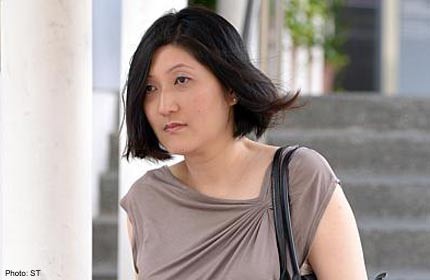Resident misses area's charm and vibrancy, others say it's peaceful

WHEN Ms Tan Huilinn moved into her Buffalo Road flat seven years ago, the area was already a bustling enclave for workers from India, Bangladesh and other parts of South Asia.
Noisy chatter from the crowds gathered at the void decks of Housing Board blocks and open fields in Little India on Sundays added, rather than detracted from, the area's charm.
The housewife - who testified on Wednesday before the Committee of Inquiry (COI) into the Dec 8 riot - gave a markedly different take from many long-time residents of the estate who appeared before and after she took the stand at the hearings.
On Tuesday, Mr Martin Pereira, a resident of Klang Lane which is just a stone's throw from the epicentre of the riot, told the committee that foreign workers would have a picnic, consume alcohol and sleep at void decks and other public places.
The chairman of the Tekka Residents' Committee said residents want to feel safe and not have their neighbourhood intruded by "hordes of men in a drunken stupor".
Ms Tan, however, said that an "unnatural" calm has now settled in Little India after the authorities clamped down on public intoxication and increased enforcement patrols in the wake of the riot.
"I feel that Little India has lost its charm and vibrancy," she told the inquiry.
For instance, foreign workers used to be seen and heard cheering and whistling during the Tamil harvest festival of Pongal, said Ms Tan, who is in her 30s.
But this year's celebrations were significantly muted.
The droves of foreign workers who make their way to Little India on their days off each weekend gave the area its liveliness and distinctive atmosphere.
These workers, she said, are usually polite and would only cause minor inconveniences, such as chatting loudly or falling asleep in public places after a few drinks.
The alcohol ban - a move she does not support - has driven some of them away.
Ms Tan told the COI that while it is all nice and quiet at night now, it is also "kind of strange at the same time" because it is "unnatural" for Little India.
"It's a forced kind of silence," added Ms Tan, who has an arts degree from a university in Australia. "It's nice to see the workers being able to relax and just sit on the fields, catching up with one another. But now, you don't see any of that, which is kind of sad in my view."
But residents who moved into the area before the influx of foreign workers - which many say started about 12 to 15 years ago - welcomed the new restrictions on alcohol sales and the increased patrols by both the auxiliary and regular police.
They said the clampdown on public consumption of alcohol has helped reduce the size of crowds that congregate in the public areas around their neighbourhood, finally bringing them some peace and quiet. Foreign workers, they told the committee, would vomit, urinate and litter at their void decks.
Mr Lim Choon Kiang, who has lived in Buffalo Road for 32 years, usually meets his 25-year-old daughter at the Little India MRT station when she returns home late at night to walk her home. This started after she was harassed by workers who would whistle at her or ask her for money.
The 54-year-old wants the restriction on alcohol sales and consumption to be made permanent so workers will stop congregating in the estate.
Mr Ho Kin Hong, who has also lived in the area for 32 years, noted that more shops in the area now sell alcohol, which add to the chaos on weekends. But things have been looking up since the authorities stepped in after the riot last year.
"Before the riot, the condition here was very chaotic. There would be cars blaring their horns, noise pollution," said the retiree. "By 9 o'clock these days, it feels very peaceful, not much noise there now."
asyiqins@sph.com.sg

Get a copy of The Straits Times or go to straitstimes.com for more stories.